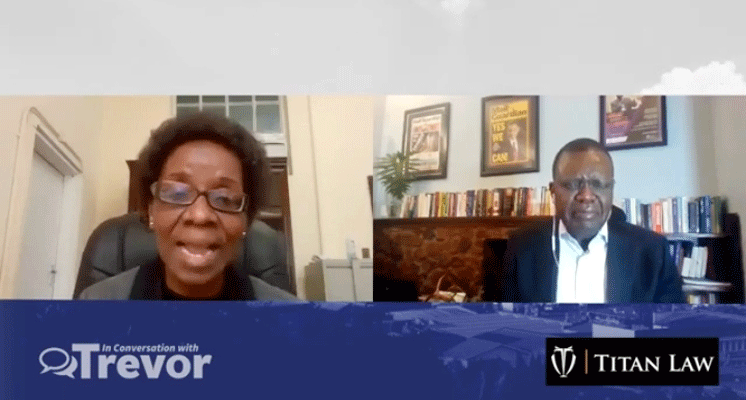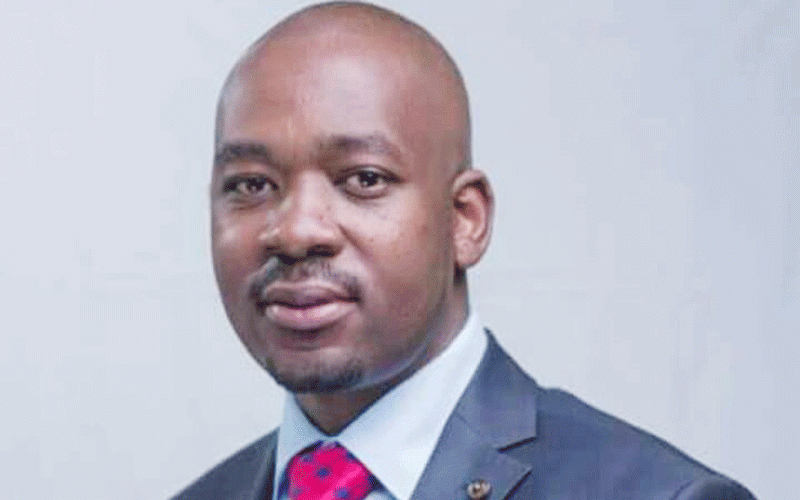
Agnes Mahomva, the chief coordinator for the national response to Covid-19 in the Office of the President and Cabinet, says Zimbabwe is yet to reach a peak in the number of infections and the country has to brace for the worst.
Mahomva (AM) told Alpha Media Holdings (AMH) chairman Trevor Ncube (TN) on the online talk show In Conversation with Trevor that government’s modelling had shown that cases would start going up rapidly this month-end.
Zimbabwe’s cases breached the 2 000 mark last week with 2 296 confirmed cases as of Friday, including 514 recoveries and 32 deaths.
Mahomva said Zimbabwe was not testing enough people to manage the pandemic. Below are excerpts from the interview.
TN: You have been in the hot seat, doctor, since May, how is the hot seat?
AM: It’s still very hot and I’m sure it will remain hot for quite some time considering the virus is still new.
TN: Dr, your academic grounding has prepared you for this task that you are now carrying out on behalf of the nation.
AM: I would say so indeed. It’s not just about the qualifications; I feel some of the experiences I had. I went straight to managing HIV/Aids back then when it was still a new virus.
- Chamisa under fire over US$120K donation
- Mavhunga puts DeMbare into Chibuku quarterfinals
- Pension funds bet on Cabora Bassa oilfields
- Councils defy govt fire tender directive
Keep Reading
The experiences that I got there and also leading an international non-governmental organisation running HIV programing here in Zimbabwe, at regional level and at global level add to the qualifications.
TN: Part of the experience, Dr, was your serving the City of Harare as clinical officer and assistant director for seven years and you were in charge of Wilkins and Beatrice, as if somebody sent you on an assignment saying you have to do these things — one day they will become relevant in your career.
AM: Very relevant, God has His way of putting things.
We never knew there was going to be this new virus and here it is and the very same institutions have turned out to be two of our main institutions managing Covid-19. That experience once again, really has helped me to hit the ground running.
TN: Talk to me about the preparedness of Wilkins and Beatrice infections diseases hospitals, are they in good condition given what they have gone through in the last six months or so?
AM: We love to continue adding on to what we have.
Covid-19 is very different; we are learning from other countries that those who are severe and critical might need to be put in the intensive care unit (ICU).
Going back to Wilkins and Beatrice, we have prepared them. Wilkins is able to take patients and admit in ICU. We now have ICU facilities at Wilkins, which we never had.
Beatrice Hospital, we are still working on it, but we are now able to isolate cases. We are still working on the ICU facilities.
We can never be 100% ready. When we say we are prepared it means we are in a better place, but if we get large numbers, we may be challenged.
TN: Where are we as far as controlling the pandemic is concerned?
AM: We are not flattening the curve, unfortunately. Transmission control is not quite where we want it. We continue to have large numbers of returning residents.
Recently we were having increased local transmissions. We don’t have it under control yet, but we are making progress. But we are still not where we want, but we need to be more concerned.
TN: What’s your biggest concern as far as your job is concerned, where are the biggest challenges coming from?
AM: The biggest concern is testing. We need to know what the pandemic is like in our communities. We really should be testing more. I am also concerned with the community response, it appears everybody is relaxing.
We are saying prevention is the utmost of this pandemic. Prevention is the cornerstone. We can talk of preparing Wilkins for ICU, but by the time you get there is a tiny percentage will need ICU. It is so important for us all to prevent.
TN: What’s your biggest challenge as far as testing is concerned?
AM: Our biggest challenge is the test kits themselves, they are not enough.
The human resource factor, we continue to have challenges with our health workers. We are really battling with that, we never relax. We continue looking for innovative ways to deal with that.
TN: What are your targets, daily for testing?
AM: We don’t want to dwell more on those numbers anymore; we are simply saying let’s make sure we have the test kits.
Targeting, we started on it but the experience told us, yes you can have the numbers and as long as we have them in a pretty document but as long as we don’t have that we won’t meet those targets.
Our priority areas are the borders, entry points, returning residents, quarantine centres.
TN: Has the private sector come on board as far as testing is concerned? If they have, has that made any difference though?
AM: Lancet Laboratories have come on board, properly, ensuring tests in the private sector are done. They are helping us a lot. They have tested many, we are really grateful.
TN: What about the costs, you are happy with what the private sector is charging?
AM: It all depends, you know, this is an expensive business.
TN: Are you happy with our isolation and quarantine centres?
AM: I would not say I am happy; they were never designed to be quarantine centres.
We continue trying to improve, but some of the challenges we face make it difficult.
TN: Do we have capacity for contact tracing? There are people escaping from quarantine centres, which raises the question, are we doing enough of contact tracing?
AM: We are prioritising the quarantine facilities so that we are able to discharge them early to avoid those challenges.
I want to assure the whole of Zimbabwe that every effort is being made to address those issues.
TN: We have seen the infections of frontline workers because they do not have the necessary personal protective equipment (PPE), does that concern your area?
AM: Anytime we get a health worker being infected, that’s a huge concern for me, we don’t want to even see that.
We have since jumped into the Bulawayo community to see what is happening; we are working on availing PPE and also making sure of the attitude our health workers.
TN: As we sit here, Dr, do you think the worst is yet to come as far as the pandemic is concerned?
AM: I can say that, Trevor; our numbers are actually going up; we are not where we think we are flattening or going down.
TN: What does the worst look like for you, Dr?
AM: The worst-case scenario that we are planning for, we are hoping never to have, is to have large numbers of people requiring ICU facilities that we won’t be able to manage; but this is modelling and that is why we are pushing for prevention, we have to avoid those large numbers that require ICU.
I can’t give you the numbers, but when we started the modelling, we were looking at the numbers increasing end of July.
The numbers on those modelling for people needing critical care are much less than we anticipated.
The message I put across is we don’t know what will happen with this new disease but we are ready to tackle any challenge.
TN: What message do you have for the communities, what do you want the communities to do?
AM: The crispy clear message is for the communities to continue holding us in government positions accountable for the things we need to do, but at the end of the day, my message to them is please you need to do something for yourselves.
It’s that prevention that I would like our communities to take more seriously.
We are sincerely hoping we get there with our communities, sooner.
TN: I saw something from the Centre of Disease Control that says it’s actually more damaging to keep the kids at home than sending them to school, do you take a view on that?
AM: We have been discussing this; we have taken the position that we need to be prepared; we opened up the exams, we specifically said we want to learn from this.
We do need to reopen, it’s not business as usual, we are now opening into the new normal.
We can say we are opening, but not opening. What concerns me as I said before, is the communities, they need to take these things seriously.
TN: The projections are that a vaccine is going to be available around January; it appears we are going to have a problem with communication, do we have a plan around that?
AM: We do have a plan; we are revisiting that strategy that is in place; yes, we have informed quite a lot, from the experience I have had with HIV, it’s not about information, but changing the behaviour.
You can know everything, but still do nothing. It’s really looking at our strategic plan and say what else can we do.
TN: There are certain places where it’s going to be difficult to socially distance. Are you not worried about community outbreaks in those crowded areas?
AM: There is certain guidance that we are giving out; it’s a combination, if you take things in isolation then we will never succeed.
TN: Would a hard lockdown be a way out?
AM: The hard lockdown we had in March helped a lot. Another lockdown will help, but prolonged lockdowns have adverse effects, which are not only Covid-19-related.
If people now can’t get food because there hasn’t been mobility, they will die of hunger; so balancing the act is where we are now.
TN: Are you getting any concerns from development partners over transparency on the donations coming in?
AM: That one will always be a voice by our partners. I think our donors always voice that.
They always are nervous, is this money going to be used appropriately or not, it’s up to us as government to demonstrate that we are. To answer your question in a very simplified way, absolutely, our donors are concerned.
TN: What have you gotten wrong, what have you gotten terribly wrong?
AM: There are so many things that we didn’t know, that we didn’t do correctly, but the big challenge is managing our ports of entry and our quarantine facilities.
That is the biggest risk. We acknowledge our gaps and challenges.
TN: What if I push back and say the numbers are not high because you are not testing enough?
AM: It is a possibility and we never ran away from that. Yes, we might have large numbers in the community because we are not testing, but they are mild because we are not seeing many community deaths, which means if there are numbers out there they are mild. We thank God for that.
We don’t want people to be ill of Covid-19; we don’t want people to die.










